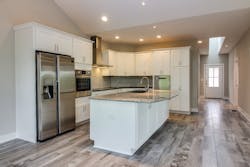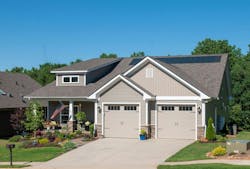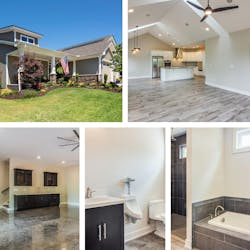Simple Methods Yield Big Benefits For Addison Homes
When Todd Usher decided to start his own homebuilding company almost two decades ago, he set out to learn the best construction practices. He asked homebuilders how they did what they did—and why.
“I pretty much always received the same answer: ‘That’s the way we’ve always done it,’” says Usher, founder and president of Addison Homes in South Carolina. “It blew me away. Surely it can’t be that everybody does it just the way they’ve always done it.”
With a lifelong environmental interest, Usher decided he wanted to do it better.
In 2002, he came across EarthCraft, an Atlanta-based high-performance building certification program, and took a two-day training seminar there. That experience put him on a career-long journey of building high-performance, energy-efficient homes.
RELATED: Tim O’Brien Homes Goes Big With Net Zero
After Usher delivered his first EarthCraft-certified home, the results astounded both the builder and his client. “This house had some of the lowest utility bills I’d ever seen, and the homeowner just raved about the comfort and the low utilities,” Usher says.
Usher decided to apply the same high-performance construction approach to all his homes. “It didn’t make sense to build some houses that only met code and build other houses that surpassed code,” he says. “How would I tell trades to do it right on this house but only do code on that house?”
How to build homes to meet national standards for energy efficiency, IAQ
A few years ago, Usher decided to adopt national standards. Now he certifies all his homes with the federal programs Zero Energy Ready Home, ENERGY STAR, and Indoor airPLUS. For clients who want to achieve net zero energy, Addison Homes adds solar photovoltaic panels.
Building to these standards isn’t as difficult as some might think, Usher says. “It’s really so simple. It’s nothing overly complicated,” he says. “But it never ceases to amaze me, the lack of focus that most in the industry have on these elements simply because code doesn’t require them.”
Those elements begin with the building envelope. Addison Homes installs insulation not just within the interior walls; it also wraps the entire exterior in a one-inch layer of extruded polystyrene foam. “It’s akin to wearing a jacket in the winter, or like wrapping a house with a Yeti cooler,” Usher says. In addition, the builder ensures air tightness by sealing all the cracks and crevices, like in the attic.
The other main components involve the heating and cooling system, as well as air filtration and ventilation. To achieve both efficiency and comfort, Addison Homes uses variable-speed electric heat pumps for heating and cooling. It also installs an exhaust system, plus a whole-house filtration system with a top-end MERV rating of 16.
The process isn’t that complicated, as Usher says, but it is detail oriented. Usher recalls recently walking through another builder’s home where the bathroom vent ducts weren’t correctly sized. “The house had tiny little flexible vent ducts hooked up to the bathroom fans, and they had to run so far there’s no way they would move any air,” Usher says. “It meets code, but it’s not best practice by any means.”
But does high performance mean high cost? Usher gets asked that a lot. He says he doesn’t know exactly how much constructing only code-compliant homes would cost since he doesn’t build them. But he estimates that building his homes costs just 2 or 3 percent more. And, he says, his home prices are competitive with homes not built to the same standards.
Lessons from building high-performance homes
Over the years, Usher has learned some valuable lessons. For one thing: “Water is your nemesis,” he says.
To fight that and other nemeses, Usher has learned to put his trust in building science. Early on, for instance, he noticed an EarthCraft standard that aimed to keep moisture from rising up the foundation wall via capillary action. “I’d always written it off, thinking that’s over the top,” he says. That is, until he had a house with moisture rising up its foundation wall via capillary action.
Now all his houses have waterproofing not only outside the foundation wall but also inside and on top of it. He hasn’t had that problem since.
“Most of these [high-performance] standards are well backed by building science. They’re there for a reason,” he says.
Moving forward, Addison Homes, which has built about 200 homes to date, will focus on growth—30 to 40 houses per year.
But in today’s revved-up market, Usher faces a common challenge: Higher demand too often leads to lower standards. “With the explosive demand we currently have, the trade base gets sloppy,” he says. “We struggle with crews that come to us and say no one else makes them” meet the same quality requirements.
Usher addresses that challenge “just with sheer oversight,” he says. “We have to spend a lot more time checking to make sure our standards are met.”
For Usher, the ultimate benefits, for his business and for society, are worth it. “The bigger challenge for us in the industry is building high-performance homes that are not just the million-dollar-plus homes but the $500,000-and-less homes—homes that can truly make an impact with far more buyers than just the 1 percent.”


